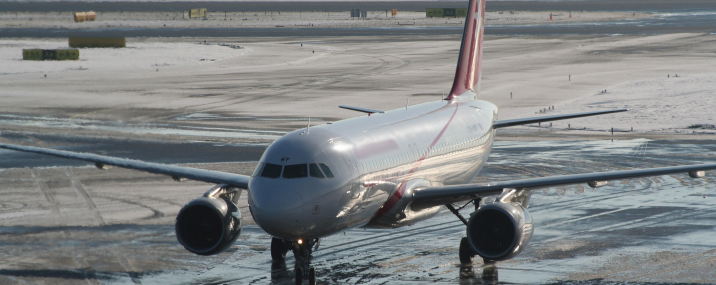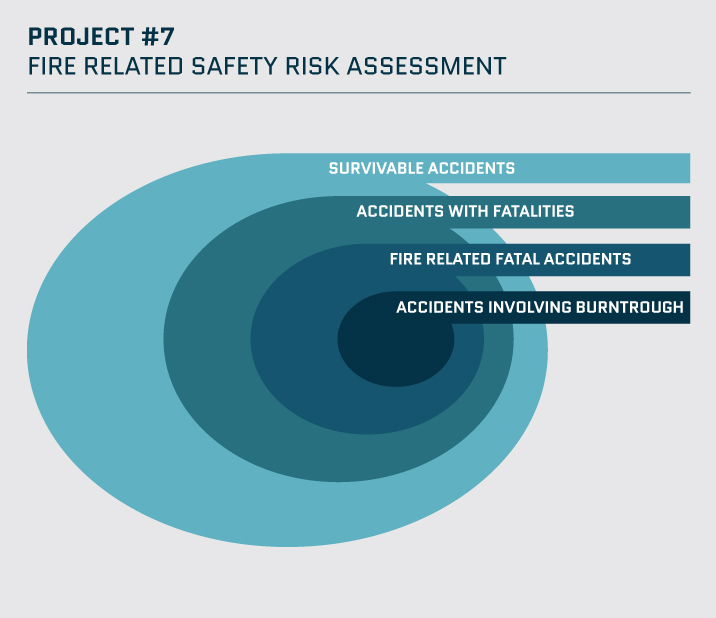Project #7
Mitigating the risk of fire, smoke & fumes
Type of Project
Collaborative Project
Theme
Building Ultra-resilient Vehicles
What is Project #7 about?
The objective of P7 is to develop solutions to mitigate risks of fire, smoke and fumes leading to possible health and safety issues. Important knowledge gaps exist around fire behaviour of Carbon Fibre Reinforced Plastics materials for primary structures, and around risks related to fire, smoke & fumes in the modern cabin environment.
The Project will improve understanding of fire behaviour of composite materials and explore new generations of mitigating solutions. Possible risks associated with on-board (including cabin) air quality will also be studied by addressing knowledge about the thermo-chemical and thermo-physical decomposition (be it natural or accidental) of materials (incl. materials, fuel, oil, ...) in new generations of aircraft systems, and its measurement when for instance low contamination level or very fast changing ones are considered. Mainly:
- Develop better methods to measure and assess material properties;
- Analyse composite behaviours under various temperature, flame, and load conditions;
- Evaluate numerical models and methods.
The scope of this project is large, embracing a variety of problems and solutions: the use of fireproof and less toxic materials, the early detection of fire, the simulation of passengers’ evacuation, etc. The research work will be focused on material and structural questions, and will aim at mitigating fire-related safety risks when/by introducing new generation of materials in future aircraft design (including possible eco-friendly ones).
P7 addresses Theme 4 “Building the ultra-resilient vehicle”, that aims at reducing the effect of external hazards on the aerial vehicle integrity, as well as improving the safety of the cabin environment.
Project Manager: ONERA

P7 “Mitigate risks of fire, smoke and fumes” is sub-divided in three Work Packages.
WP7.1 – Understanding and characterising the fire behaviour of primary structure composite materials (epoxy resins, standard CFRP)
The objective of WP7.1 is to enhance knowledge concerning the fire behaviour and performance of Carbon Fibre Reinforced Plastics (CFRP) primary structure composite materials, in order to better predict safety and survivability issues in case of fire incident or post-crash situation. Such predictions rely on physical models and numerical tools which need to be developed based on exhaustive material (characterisation) and components (validation) experimental testing. WP7.1 will produce a comprehensive experimental database for a reference material to be shared by the European research community as a basis for material model development of the fire behaviour and degradation of CFRP materials.
WP7.2 – Improving material solutions to mitigate fire, smoke and fumes in cabin environment (plus toxicity)
WP7.2 aims at developing and assessing innovative material solutions to mitigate risks of fire, smoke and fumes in the cabin environment. Novel highly fire resistant materials will be studied addressing the main mechanisms that improve the fire resistance at material level. The new solutions will be assessed at the material and structural level with respect to current industrial safety requirements using standard experimental methods and state-of-the art simulation tools.
WP7.3 – Effects of new materials, technology and fuel systems on the on-board air quality
WP7.3 objective is to investigate the opportunities offered by technical developments to study air quality and confront it to safety considerations. Indeed technically feasible and economically viable measures may reduce any unwanted air contamination on-board aircraft, which would then help to contribute to the definition of additional safety regulations in case they would be needed as a follow-up to the investigations related to the reported health problems. The focus is on a thorough understanding of the sources and recent developments as a basis for integrated solution to avoid negative impacts for the safety (including health) of crew and passengers. Sensing technology and an industrial framework for monitoring of air quality are investigated.
The overall project objective is to contribute to increase safety - meaning here reduce the number of fatalities - with respect to fire related issues (in-flight or post-crash) and to prevent any staff or passengers safety problems due to inappropriate air quality.
P7 is expected to produce/develop:
- Improved test protocols and material test results;
- Shared/open experimental database;
- Knowledge on effects of new materials on onboard air quality;
- Patents applications (materials, concepts).






